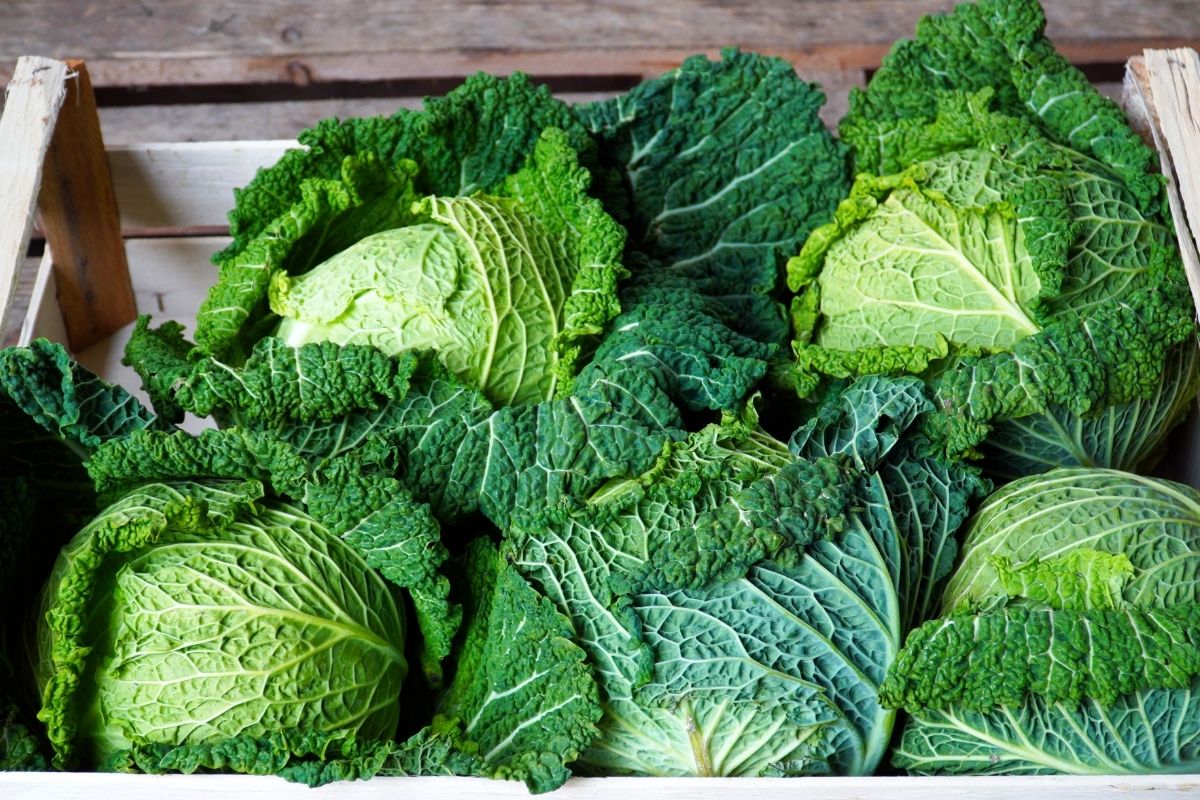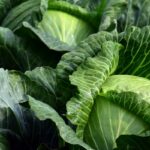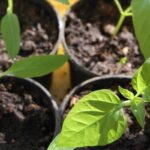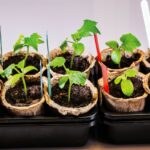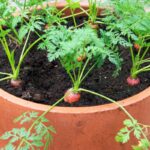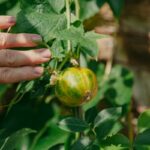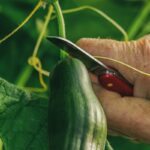Cabbages are one of the easiest crops to grow – you can grow them in the ground or in containers. The best part is you can get a cabbage harvest all year round.
Cabbages can survive almost all kinds of conditions except for harsh frost, which makes them an excellent crop for your garden.

While the growth may be easy, the harvest requires some knowledge beforehand to ensure maximum results.
How to harvest cabbage correctly will depend on the variety of seeds you used, and the time of planting.
To help you out on this journey, I have compiled a simple guide on how to harvest your cabbage crop and care for it correctly.
Continue reading if you want your cabbage crop to produce thick, rich leaves during the next season.
How To Care For Cabbage Crops
Before you even think about harvesting your cabbages, you need to know how to look after them properly to ensure a good crop.
Follow my top tips below:
Soil
Cabbages require a large number of nutrients for strong growth. This is why they grow best in soil rich in organic matter.
You can use organic fertilizers and mulch to enhance the soil. Moreover, they also need well-draining soil, such as loamy soil, that provides enough water retention while draining out the excess.
Watering
They are usually grown in cold areas, hence extensive watering is not required.
They need 1 ½ inch of water per week, with thorough watering every 2 weeks.
However, you need to be mindful of overwatering since it can trigger many complications.
Fertilizer
The natural soil nutrients may not be enough for cabbages, and you may have to provide extra nutrients in the form of fertilizers.
Organic fertilizers like potassium, nitrogen, and compost are great for the growth of cabbages.
Let the crop rest for at least a month before applying any fertilizer to it though. This way it gets enough time to get accustomed to the soil conditions.
Pests And Diseases
Cabbages are often exposed to various pests and diseases which may compromise the quality, weight, and quantity of your harvest.
Therefore, it is best to treat them without any delay.
Some common cabbage pests are aphids, fleas, cabbage worms, cabbage head borer, caterpillars, and nematodes.
If you see your cabbage leaves turning yellow, or wilting they may be suffering from a disease.
Some common cabbage diseases are blackleg, bottom rot, clubroot, downy mildew, and leaf spot.
The first indication of these diseases and infections is damage to the leaves and stem.
To keep your crop safe from any such infestation, you should use an insecticide or a pesticide regularly.
However, be sure not to overdo it as it can also lead to unwanted results.
Removing the weeds regularly and taking care of the watering needs of your cabbage crop also helps in preventing the spread of disease.

When To Harvest Cabbage
Now you know how to care for your cabbages, let’s talk about harvesting!
The most important step in harvesting cabbages is determining when to pick them up. After all, what use is a soft, tiny cabbage without any juicy leaves?
Depending upon the variety you’ve planted, you can harvest cabbages in about 80 to 180 days from seeds or 60 to 105 days from a transplant.
Hence, always keep track of the sowing and planting to ensure a ripened harvest – I find using a gardening calendar to be helpful for this.
You can check if your cabbages are ready for harvest by pressing down the head. Once it reaches the size of a football and the head feels firm on pressing, it is time to harvest this beauty. It should weigh anywhere around 1 to 3 pounds.
Another indication of the harvesting time is cracked heads. The rain also plays a major role in cracking open the leaves on the head.
If there is any rain forecast, and your cabbages are ready, immediately harvest your crop, or else the cracks will render it useless.
How To Harvest Cabbage
When it comes to harvesting cabbages, you have two options. You can either pull out the entire crop or leave out the stem to get another harvest out of it.
In the case of loose soil, you can pull out the whole cabbage including the root and stem. Firmly hold the base of the head, twist it, and directly pull it out of the ground.
Use a sharp knife or a cutter and cut the cabbage head only, leaving behind the stem. You can also leave a few old, worn-out leaves at the bottom for protection of the upcoming harvest.
After 2 weeks, you will see smaller, baby cabbages appear out of the stem which can be harvested normally.
How To Clean Cabbage After Harvest
Once you have harvested the cabbage head, it is time to clean and use it. Remove any yellow, loose leaves from the outside.
Wash the cabbage properly to remove any dirt or pests that may be on it. If you can, soak the cabbages in salt water for half an hour to completely get rid of any impurities.
Don’t wash the cabbages with detergent or any dish washing solution; it may leave an unwanted taste on them and can prove to be harmful.
If you do not plan on using the cabbages at the moment, wrap them in cling foil and store them in the refrigerator.
Do not wash the cabbages unless you intend on using them otherwise, they will go bad more quickly.
How To Store Cabbages
You can store cabbages in the refrigerator for up to 2 months after the harvest. Wrap them in a clingfilm, and keep them in a cool, dry place – the fridge is usually best.
You can also place them in a basket and store them in your basement or cellar. The high humidity ensures the cabbages stay fresh for up to 6 months.
With some effort on your part, you can also cut the cabbage into wedges and blanch them. Freeze the blanched wedges for up to 9 months and enjoy your harvest for almost a whole year.
Final Thoughts
I hope this article sorted out all questions you had about how to harvest cabbages. Not only are cabbages simple to grow, but they are super easy to harvest too.
Just keep track of the planting time, weather, and harvesting technique and you are good to go.
Did you know you can also grow cabbages indoors? This is great if you have no outdoor space but don’t want to miss out on growing your own produce.
- Can You Grow Bell Peppers Indoors? A Guide For New Gardeners - November 14, 2023
- Composting Basics: Can You Compost Mushrooms? - November 6, 2023
- A Gardener’s Guide To Growing Carrots In Raised Beds - November 1, 2023

